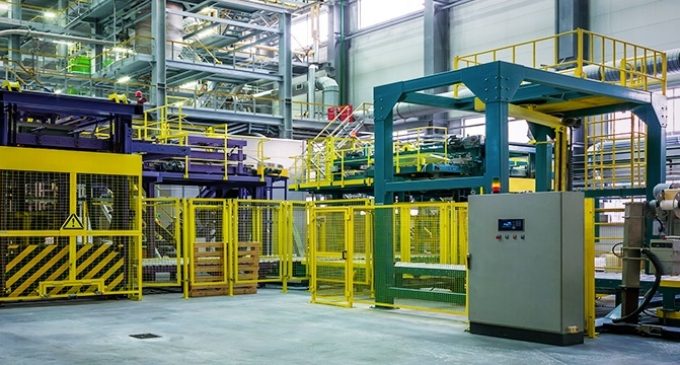New order growth accelerates at start of 2022 to boost Irish manufacturing sector

A faster increase in new orders boosted the Irish manufacturing sector in January, according to the first PMI® survey data for 2022 from AIB. Demand for Irish goods increased at the fastest rate in four months, although output growth slowed to a ten-month low due to ongoing material and staff shortages. Cost pressures remained severe but eased further from last October’s series record high, leading to the slowest rise in output prices in five months.
Commenting on the survey results, Oliver Mangan, AIB Chief Economist, said: “The AIB Irish Manufacturing PMI for January shows continuing strong growth in the sector, with the headline index picking up to 59.4 from 58.3 in December. The index remains at an elevated level historically, with the January reading higher than in any month prior to April 2021. The Irish reading is on a par with the flash January index for the Eurozone, which picked up from 58.0 to 59.0, and above the flash indices for the UK and US of 56.9 and 55.0, respectively
“The subcomponents of the Irish PMI survey also registered strong readings. The most encouraging aspect was a marked rise in new orders, including for exports. Growth in output, though, while remaining strong was constrained by staffing problems, often due to absences linked to Covid. However, overall employment in the sector continued to grow at a very solid pace.
“Not surprisingly, with orders picking up but constraints on production, backlogs of unfinished work continued to rise sharply. Firms responded with another marked rundown in their inventories of finished goods. Meanwhile, the delivery times for inputs also lengthened again, reflecting the ongoing pressure on supply chains. Manufacturers were very positive on the 12-month outlook for production, with the recovery from the pandemic expected to continue in 2022 and new business growing.
“The combination of strong demand, disruptions to supply chains and continuing upward trend in prices of raw materials, energy and transportation, meant the pressure on costs remained intense. There were further marked rises in firms input and output prices, though the rate of increase has eased somewhat recently.”
Overview
The headline AIB Ireland Manufacturing PMI® is a composite single-figure indicator of manufacturing performance. It is derived from indicators for new orders, output, employment, suppliers’ delivery times and stocks of purchases. Any figure greater than 50.0 indicates overall improvement of the sector.
The PMI rose to 59.4 in January, from December’s nine-month low of 58.3. The latest figure signalled a strong overall improvement in manufacturing business conditions, and was higher than in any survey period prior to April 2021. The PMI was only fractionally below its 2021 average of 59.7.
The month-on-month gain in the PMI in January was only the second registered since last May’s record high. It was reflected in four of the five components, the exception being output. The largest positive directional influences were provided by suppliers’ delivery times (the index for which is inverted in the PMI calculation) and new orders.
Demand for Irish manufactured goods rose for the eleventh month running in January. Moreover, the rate of growth accelerated to the fastest since last September, partly linked to new customers. Export demand also improved following subdued increases throughout the final quarter of 2021.
Although new business inflows quickened in January, Irish manufacturing output failed to keep pace due to ongoing material and staff shortages. Production rose for the eleventh month running, albeit at the weakest rate since last March. That said, growth remained strong overall in the context of the survey history.
With growth of output slowing, manufacturers continued to fulfill orders by selling direct from existing stock. Inventories of finished goods declined for the seventh consecutive month, and at the fastest rate since last August.
Backlogs of work continued to rise in January, reflecting pressure on capacity from stronger new orders, supply shortages and high levels of staff absences. The rate of growth quickened since December and was among the strongest on record.
Manufacturers continued to add to their workforces in January, to address capacity constraints and in expectation of higher output requirements in 2022. Staffing in the goods-producing sector rose for the sixteenth consecutive month, and the rate of job creation picked up from December’s tenmonth low.
Purchasing of inputs sped up in January in line with the faster increase in new orders. Buying activity rose at the strongest rate since last August, with firms also linking higher purchases to efforts to secure stocks ahead of expected price increases and supply delays. Input stocks rose at one of the fastest rates on record, while supply chains remained stretched in January. Input lead times lengthened to a greater extent than in December, albeit less so than the trend seen over 2021 as a whole.
Inflationary pressures in the manufacturing sector remained severe in January, but showed signs of easing. Input and output prices both increased at the slowest rates since last August, albeit ones that remained among the highest on record.


























